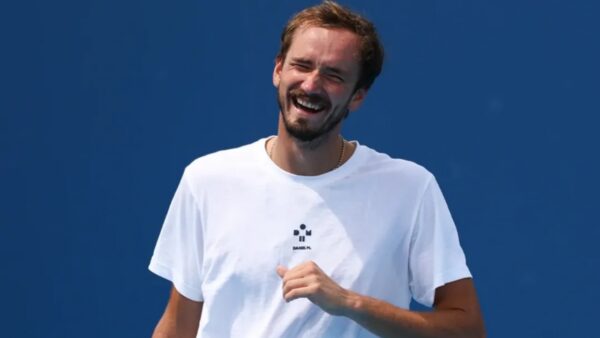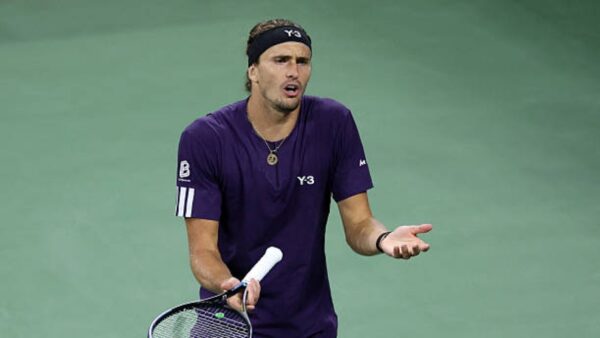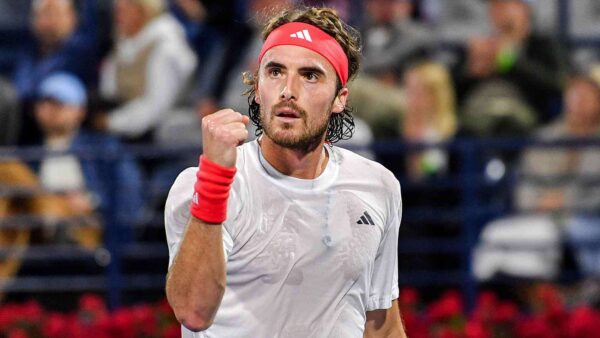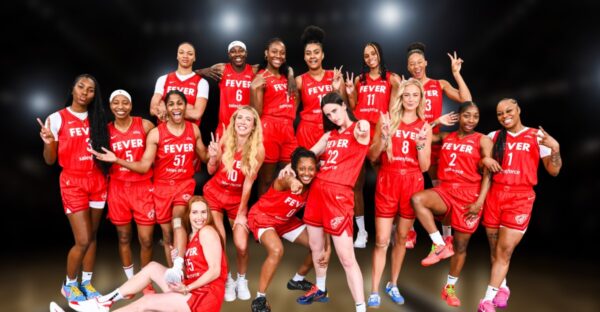Who After Sindhu: Indian badminton’s Women’s Singles dilemma

🔍 Explore this post with:
Indian badminton fans got a glimpse of life beyond PV Sindhu at the World Championships and Commonwealth Games and the picture is far from rosy.
While Sindhu was expected to win the Women’s Singles title at the CWGs and duly did, her understudy Aakarshi Kashyap endured a less-than-convincing quarterfinal exit.
But Sindhu pushed herself to the limit to clinch the Commonwealth gold amidst a crowded BWF calendar and had to miss out on the World Championships due to injury.
India’s WS representatives at the Worlds were veteran Saina Nehwal who gave her best before losing in the Round of 16 and young Malvika Bansod who had a disappointing First Round exit after promising results throughout the year.
After these two tournaments one thing is clear: There is no world-class Indian shuttler on the lines of An Se Young and Pornpawee Chochuwong in the horizon.
The present situation is a far-cry from the days when an 18-year old Saina would battle it out in an Olympic quarter-final, an 18-year old PV Sindhu would defeat World Champions in straight games and when an 18-year old Aparna Popat won a World Junior silver.
It is easy to think that India would see improved depth in Women’s Singles given the population size and the growing popularity of badminton over the last decade. However that has not occurred and the country has regressed in the discipline.
BAI’s Selection Policy and it’s loopholes

The Badminton Association of India (BAI) on paper had a fair and transparent selection policy for the Thomas-Uber Cups and Commonwealth and Asian Games.
But India’s historic Thomas Cup win and record three Commonwealth golds could have come even without the elaborate selection procedure as the players involved in the victories were already among the international elite.
If the goal of the policy in Women’s Singles was to ‘give exposure’ to youngsters in the hope of improving depth and unearthing the next Saina/Sindhu, then so far it has been a failure.
India were blanked by South Korea and Thailand in the Uber Cup; it was a similar story in last year’s edition. In the CWGs, young Aakarshi looked a long way away from joining Sindhu in the podium.
The 2021 and 2022 World Championship results also reflected the same.
All that happened was a conflict between Saina Nehwal and the BAI. While Saina does have valid arguments and her non-selection did possibly cost India a medal at the CWGs, the BAI is also correct in it’s intention to expand the talent pool beyond the Top Two.
BAI’s selection in Women’s Singles involved World Rankings, two domestic ranking tournaments and a league-cum-round robin selection trial competition involving 19 players. The top three (Aakarshi, Ashmita Chaliha and Unnati Hooda) were selected for the Uber Cup and Asiad and the winner (Aakarshi) was selected for the CWGs.
In hindsight the error was that the policy relied far too heavily on the domestic selection tournaments and did not give any emphasis to international performances.
The policy makes it possible for a player to ‘game the system’ by participating in more BWF tournaments to rise up the World Rankings and then beating the same and familiar domestic opponents in the innumerable BAI-organised ranking and selection competitions, only to come a-cropper against international players in high-profile events.
That the policy was objective is a good thing, but there are subjective factors that can indicate whether a young player is destined to be a journeyman or can be a future Top 10.
An experienced coach can tell if a player has the all-round game to compete internationally, if they are constantly improving on their weaknesses and if they have the hunger and determination to defeat the world’s best and are not content on just beating domestic players and getting selected for India.
The young Saina and Sindhu had these qualities and these are usually reflected in international results.
The present policy (which also aims to create a core group for the 2024 Olympics and consequently the TOPS selection) did not look at placing in international tournaments; and matches, games and points won against higher-ranking foreign opponents.
All of the young Indian WS players at a similar middling level at present but even given the fact, a case can be made that the present BAI policy was flawed.
Indian WS contenders beyond Sindhu
Aakarshi Kashyap

World No. 56 Aakarshi was one of the biggest disappointments in India’s CWG badminton campaign. She struggled to beat the lower-ranked Mahoor Shahzad in the first round and looked all at sea in a 10-21, 7-21 defeat to World No. 17 Kirsty Gilmour in the quarterfinals. Aakarshi’s shots lacked variety, power and accuracy. Her court movements were sluggish and her body language lacked confidence.
She has not been in good form internationally this year despite winning the domestic selection trials. Her only wins were against players ranked far lower than her and she suffered straight game losses against higher-ranked opponents.
Her international performance has plateaued since reaching the semis of the Dutch Open International Challenge in 2021.
She is still just 20 and can only improve from here but perhaps her selection for the CWGs was erroneous.
Malvika Bansod

A left-hander who relies on rallying and deception rather than power, 20-year old Malvika made headlines after beating Saina in the 2022 India Open. That was not her only big international scalp this year – she beat China’s Han Yue in the Korea Open. She also took Line Christophersen and CWG medalists Yeo Jia Min and Michelle Li to three games in other competitions. Which is why her straight game loss to Christophersen in the Worlds was a disappointment.
Last year she won the Uganda and Lithuanian Internationals and put up a decent showing against Akane Yamaguchi in the Uber Cup.
Malvika’s problem has been consistency – a big win is often followed by a tame loss to a similar or lower-ranked player. She will have to work on this aspect if she wishes to crack into the Top 30.
Ashmita Chaliha

22-year old Ashmita is popular on social media for being among the few young Indian WS shuttlers with an effective jump smash. The rest of the left-hander’s game lacks polish however which is why she has not broken through as hoped.
There are aspects in her game which can enthrall fans – witness her straight-game win over World No.12 Busanan Ongbamrungphan in the Singapore Open and her second-game performance against PV Sindhu in the India Open but these moments of brilliance have been too few and far between to make a noticeable difference.
She has the potential to be a bigger force internationally if provided with the right coaching and guidance.
Saina Nehwal
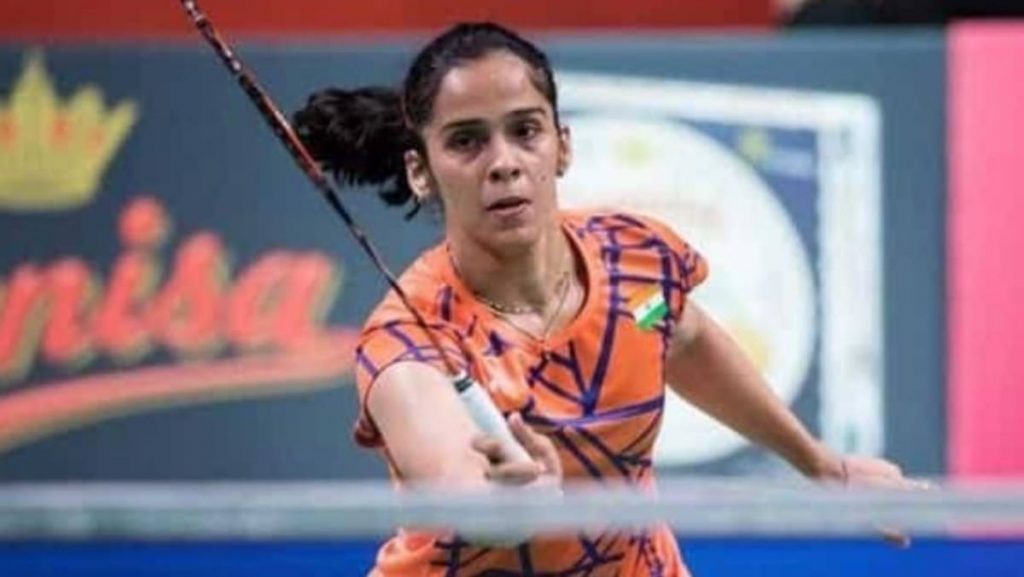
At 32 Saina is still India’s No. 2 WS. This fact is both a testament to her determination and longevity and an indictment of BAI’s junior program.
Saina still has her renowned fighting spirit intact – be it her win against He Bing Jiao in the Singapore Open, her three-game losses to Yamaguchi and Busanan in the All-Englands and Worlds or her off-the-court battles with the BAI.
It is highly likely that Saina in recent form would have made it to the CWG semis at the least. But the 2012 Olympic bronze medalist would have done her legacy no harm by acknowledging the CWG medalists on social media.
The fracas has burnt bridges between Saina and the establishment and it remains to be seen if she gets selected by the BAI for future tournaments.
The next generation

Apart from the shuttlers in their early 20s there is a newer crop of juniors coming up. Unnati Hooda, Tasnim Mir, Anupama Upadhyay, Tara Shah, Tanya Hemanth, Samiya Imad Farooqui and Aditi Bhatt are some of the names.
All these players are in their teens. 14-year old Unnati, the youngest of the lot, got considerable attention after winning the inaugural Odisha Open Super 100 this year and even drew comparisons with a young Saina. However that tournament lacked international participation partly due to the pandemic.
Unnati also got selected for the Senior team but has so far not played a match for India in the senior level.
Unnati, Anupama and Rakshitha Sree placed top three in the recent Junior Selection Trials and are likely to be selected for the Junior World Championships in October which will be their biggest test yet.
The way ahead
That there is no truly world-class junior WS shuttler in India is a fact. But the present BAI policy does not make optimum use of the available talent.
Malvika and Ashmita (or even Unnati) may not be at the highest skill level but their international trajectory has improved as compared to Aakarshi who has remained stagnant. These players would have given a better fight at the CWGs if exposure was the criteria. Saina should have been the pick if a medal was needed.
The long term solution for the present dilemma is to expand quality coaching facilities beyond the academies at Bengaluru and Hyderabad.
For the short to medium term a new selection policy will have to be adopted. One that can combine points, games and matches won internationally, the ranking of the international opponents faced and international tournament performance along with domestic results.
It should also be examined if the number of ranking and selection tournaments are helping or hindering a junior’s growth.
After all the players are selected for facing opponents from the top badminton-playing countries and not domestic names.
India’s WS scene is going through a transition phase and the sooner the BAI adapts to the changing times the better for the sport in the country.



